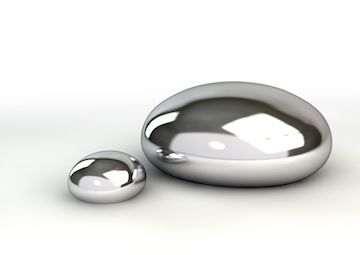What You Need to Know About the New EPA Regulation for Amalgam Waste
After being withdrawn in January, the EPA has reinstated a new rule requiring U.S. dental offices to install amalgam separators, effective July 14. Working in collaboration with the ADA to create a sensible approach to dental amalgam waste management, both organizations hope to phase in the new regulations over the next three years. Read on to find out what your practice will need to do to comply.

The ADA plans to provide resources for dentists with questions about compliance with the EPA new regulation
Who
·The American Dental Association and Environmental Protection Agency worked for several years to reach what they call a “fair and reasonable” approach to dental amalgam waste.
·General dentistry practices and large dental facilities are required to comply with the ruling.
·Oral pathologists, oral and maxillofacial radiologists, oral and maxillofacial surgeons, orthodontists, periodontists and prosthodontics are exempt from the ruling.
·Mobile dental units and dentists who do not place amalgam are also exempt.
RELATED:
·UCLA Heads Project to Increase Preventative Dental Care
·Top Bike-Friendly U.S. Destinations
·How to Choose a Financial Planner
What
·The new ruling will (1) require the use of separators (2) prohibit providers from flushing waste amalgam down drains and (3) prohibit the use of bleach or chlorine-containing cleaners that may lead to the dissolution of solid mercury when cleaning chair-side traps and vacuum lines.
·The cost varies greatly from office to office, according to our sources from the ADA. It depends on the size or number of units needed, any reworking of plumbing or equipment and other factors. However, because a separator may extend the life of other equipment, actual overall costs for some dental offices may be less.
When
·The ruling is effective as of July 14, 2017
·Compliance for most dentists will be July 14, 2020
Where
·All non-exempt practices operating in the U.S.
Why
·“Although less than one percent of mercury released to the environment from man-made sources comes from dentistry, dentists are committed to protecting the environment,” our sources said. “By adding separators, dentists have much greater control in their efforts to ensure a healthier environment for everyone. The use of a separator is the only effective way to capture the waste amalgam so it can be recycled.”
·“The ADA supports this national regulation because it is a fair and reasonable approach to the management of dental amalgam waste,” the ADA representative continued. “It is far better for dentists than a patchwork of inconsistent regulations that vary between states and localities. The ADA worked with the EPA for several years on the final rule and it closely follows the ADA's best management practices.”
Discover more Dentist’s Money Digest® news here.
ACTIVA BioACTIVE Bulk Flow Marks Pulpdent’s First Major Product Release in 4 Years
December 12th 2024Next-generation bulk-fill dental restorative raises the standard of care for bulk-fill procedures by providing natural remineralization support, while also overcoming current bulk-fill limitations.